
Covered by:
| Recommendation 41 | Establish procedures and processes to integrate the opening of data in your common business processes, working routines, and in the development of new information systems. Supporting Solutions |
| Recommendation 42 | Publish open data in machine-readable, non-proprietary formats. Ensure that open data is accompanied by high quality, machine-readable metadata in non-proprietary formats, including a description of their content, the way data is collected and its level of quality and the licence terms under which it is made available. The use of common vocabularies for expressing metadata is recommended. Supporting Solutions |
| Recommendation 43 | Communicate clearly the right to access and reuse open data. The legal regimes for facilitating access and reuse, such as licences, should be standardised as much as possible. Supporting Solutions |
Legal initiatives |
Description |
Recommendations |
|
Short title: Open Data Directive Title: Directive 2019/1024 on open data and the re-use of public sector information (Recast) Status: In force and transposed |
The directive promotes the use of open data lays down the legal framework for the reuse of public-sector information such as geographical, land registry, statistical or legal information held by public-sector bodies or public undertakings, and of publicly funded research data. Public-sector bodies and public undertakings must make their documents available in any pre-existing format or language and, where appropriate, by electronic means in formats that are open, machine readable, accessible, findable and reusable, complete with their metadata. | |
|
Short title: INSPIRE DIRECTIVE Status: In force and transposed |
The INSPIRE Directive lays down general rules setting up an infrastructure for spatial information in Europe for the purposes of European Union (EU) environmental policies and for policies or activities which may have an impact on the environment. The European infrastructure builds on that of spatial information that is established and operated by EU countries. |
Recommendation 42 |
|
Short title: General Data Protection Regulation (GDPR) Status: In force |
The General Data Protection Regulation (GDPR) allows European Union (EU) citizens to better control their personal data. It also modernises and unifies rules allowing businesses to reduce red tape and to benefit from greater consumer trust. The GDPR is part of the EU data protection reform package, along with the data protection directive for police and criminal justice authorities. |
Recommendation 42 |
|
Short title: Single Digital Gateway Regulation Status: In force |
The single digital gateway will facilitate online access to the information, key administrative procedures and assistance and problem-solving services that citizens and businesses may wish to contact if they encounter problems when exercising their internal market rights while living in or doing business in another EU country. | Recommendation 42 |
| Standards and Specifications | Relevant Recommendations | Corresponding Solutions |
|
Name: DCAT-AP Description: The DCAT Application Profile for data portals in Europe (DCAT-AP) is a specification based on the Data Catalogue Vocabulary (DCAT) developed by W3C. This application profile is a specification for metadata records to meet the specific application needs of data portals in Europe while providing semantic interoperability with other applications on the basis of reuse of established controlled vocabularies (e.g. EuroVoc) and mappings to existing metadata vocabularies. |

|
|
|
Name: ADMS-AP Description: The Asset Description Metadata Schema (ADMS) is a specification used to describe reusable solutions, such as data models and specifications, reference data and open source software. It was created with the help of a working group of experts. On 1 August 2013, W3C published ADMS as a W3C Working Group note. |

|
|
|
Name: BregDCAT-AP -RoR Description: The Registry of Registers is a solution dedicated to an application profile of DCAT-AP for base registries, namely, BRegDCAT-AP, aiming to provide a standard data model / specification for base registries access and interconnection. |
Recommendation 42 | 
|
|
Name: Core Public Service Vocabulary (CPSV) Description: The Core Public Service Vocabulary Application Profile is a data model that has been developed in the context of a Working Group for describing public services. The main focus of the CPSV-AP version 1.00 was the description of public services and business events on the Points of Single Contact which each Member State had to implement in the context of the Services Directive (2006/123/EC). |
Recommendation 42 | 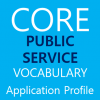
|
|
Name: Core Vocabularies Description: Core Vocabularies are simplified, reusable, and extensible data models that capture the fundamental characteristics of an entity, such as a person or a public organisation, in a context-neutral manner. |
Recommendation 42 | 
|
|
Name: ELI Ontology Description: The European Legislation Identifier (ELI) is a framework to make legislation metadata available online in a standardised format, so that it can be accessed, exchanged and reused across borders. For general information about ELI (governance, tools and news), and the implementation status of ELI by various stakeholders (in particular, the way ELI is implemented by the Office of Publications on Eur- Lex), please consult the ELI Register on Eur-Lex. |
Recommendation 42 | 
|
|
Name: Core Public Service Vocabulary (CPSV-AP) Description: The Core Public Service Vocabulary Application Profile is a data model that has been developed in the context of a Working Group for describing public services. |
Recommendation 42 | 
|
| Solution | Description | Associated Recommendations |
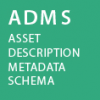
|
The Asset Description Metadata Schema (ADMS) is a specification used to describe reusable solutions, such as data models and specifications, reference data and open source software. It was created with the help of a working group of experts. On 1 August 2013, W3C published ADMS as a W3C Working Group note. | |
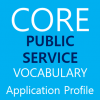
|
The Core Public Service Vocabulary Application Profile is a data model that has been developed in the context of a Working Group for describing public services. The main focus of the CPSV-AP version 1.00 was the description of public services and business events on the Points of Single Contact which each Member State had to implement in the context of the Services Directive (2006/123/EC). |
Recommendation 42 |

|
Core Vocabularies are simplified, reusable, and extensible data models that capture the fundamental characteristics of an entity, such as a person or a public organisation, in a context-neutral manner. | Recommendation 42 |

|
The use of CISE specifications and data models, helps to ensure that public administrations are taking into account relevant EU recommendations on standards and specifications in the maritime domain and are seeking to make the approach consistent across borders. | Recommendation 42 |

|
The DCAT Application Profile for data portals in Europe (DCAT-AP) is a specification based on the Data Catalogue Vocabulary (DCAT) developed by W3C. This application profile is a specification for metadata records to meet the specific application needs of data portals in Europe while providing semantic interoperability with other applications on the basis of reuse of established controlled vocabularies (e.g. EuroVoc) and mappings to existing metadata vocabularies | Recommendation 42 |
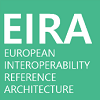
|
The European Interoperability Reference Architecture (EIRA©) is an architecture content metamodel defining the most salient architectural building blocks (ABBs) needed to build interoperable e-Government systems. The EIRA© provides a common terminology that can be used by people working for public administrations in various architecture and system development tasks. The EIRA© was created and is being maintained in the context of Action 2016.32 of the ISA² Programme. The EIRA uses (and extends) the ArchiMate language as a modelling notation and uses service orientation as an architectural style. | |

|
The European Legislation Identifier (ELI) is a framework to make legislation metadata available online in a standardised format, so that it can be accessed, exchanged and reused across borders. For general information about ELI (governance, tools and news), and the implementation status of ELI by various stakeholders (in particular, the way ELI is implemented by the Office of Publications on Eur- Lex), please consult the ELI Register on Eur-Lex. | Recommendation 42 |
| This is a SHACL-based ELI validator. It generates validation reports to verify that ELI metadata is published correctly according to the ELI ontology. | Recommendation 42 | |

|
The CEF eTranslation Building Block is a machine translation tool that helps public administrations and businesses exchange information and documents across all official EU languages, Icelandic and Norwegian. Public administrations, citizens and businesses in the EU will thus be able to benefit from digital services in the language of their choice. |
Recommendation 42 |

Location Framework Blueprint |
The European Union Location Framework (EULF) Blueprint is a framework of recommendations and related guidance for publishing and using location information and applying interoperability principles in digital government. The EULF Blueprint was initially developed through the EULF project in the ISA programme. The content has been updated extensively through the European Location Interoperability Solutions for e-Government (ELISE) project, which is part of the ISA2 programme. | |

|
DG DIGIT, European Commission, Europe Description: The main objective is to create a shared European data model about representation powers and mandates, which allows powers/mandates information originated in the information systems of one country to be directly processed automatically by the information systems in other country. The data model will be tested in real life through pilots with some MS and the technical specification will be put forward to the CEF eID Operational Management Board for endorsement and proposed to be incorporated in the CEF eID sample implementation and extension of the CEF eID technical specifications. |
Recommendation 42 |
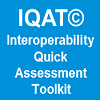
|
The objective of the IQAT© is to allow Solution Owners to assess the Potential Interoperability of their software solutions supporting Public Services. The toolkit is based on a specific conceptual model for the Interoperability assessment of software solutions, which relies on four interoperability areas: Interoperability (IOP) Governance, Software Architecture, |
Recommendation 41 |

|
IMAPS is a user-friendly online questionnaire, designed as a self-assessment tool to assist public service owners to evaluate key interoperability aspects of their digital public service. Not only can IMAPS be used to assess the interoperability of any public service – from open data portals, and e-voting platforms, to public procurement services, and much more – it is applicable to services at all levels of government (international, national, regional and local). |
|

|
LEOS is designed to help those involved in draſting legislation, which is usually part of a complex process, by facilitating efficient online collaboration. Comments, suggestions, version control, co-edition, everything is there. Regarding the structure, that is where we aim to be as restrictive as possible and this is not because we are conservative, but because this helps the draſters follow the rules and avoid mistakes. Content is stored in an XML format, currently Akoma Ntoso V3. | Recommendation 42 |

LIMAPS v1.0.0 |
This is the Beta version of the Legal Interoperability Maturity Assessment of a Public Service (LIMAPS) survey. This Beta version of the LIMAPS Survey has been released on the 21 April 2020 on Joinup. It is a user-friendly online questionnaire, designed as a self-assessment tool to assist public service owners to evaluate key legal interoperability aspects of their digital public service. The current Beta version of LIMAPS (LIMAPS v1.0.0 Beta) is available at the EU survey portal: https://ec.europa.eu/eusurvey/runner/limaps-beta. |
Recommendation 43 |

|
This public multilingual knowledge management infrastructure will support e-commerce solutions, such as machine translation, localisation and multilingual search, by creating interoperable multilingual classifications and terminologies that will be easily reusable by small and medium-sized enterprises (SMEs) and public administrations. SMEs are currently at a disadvantage compared to big companies due to the high cost of providing multilingual services. | Recommendation 42 |

OIMAPS v1.0.0 |
This is the Beta version of the Organisational Interoperability Maturity Assessment of a Public Service (LIMAPS) survey. This Beta version of the OIMAPS Survey has been released on the 21 April 2020 on Joinup. It is a user-friendly online questionnaire, designed as a self-assessment tool to assist public service owners to evaluate key organisational interoperability aspects of their digital public service. The current Beta version of OIMAPS (OIMAPS v1.0.0 Beta) is available at the EU survey portal: https://ec.europa.eu/eusurvey/runner/oimaps-beta. |
Recommendation 43 |
|
SIMAPS v1.0.0 |
This is v1.0.0 of the Semantic Interoperability Maturity Assessment of a Public Service (SIMAPS) survey. This version of the SIMAPS survey has been released on the 02 July 2020 on Joinup. It is a user-friendly online questionnaire, designed as a self-assessment tool to assist public service owners to evaluate key semantic interoperability aspects of their digital public service. The current version of SIMAPS (SIMAPS v1.0.0) is available at the EU survey portal: https://ec.europa.eu/eusurvey/runner/SIMAPS_v_1_0_0 The release is composed of the following elements:
|
Recommendation 41 |

|
The Registry of Registers is a solution dedicated to an application profile of DCAT-AP for base registries, namely, BRegDCAT-AP, aiming to provide a standard data model / specification for base registries access and interconnection. | Recommendation 42 |
|
Publications Office, Europe Description: VocBench provides a solution to centralise the management of controlled vocabularies and metadata used by your public administration to support interoperability. |
Recommendation 42 | |

|
The “ESS Enterprise Architecture Reference Framework”, abbreviated ESS EARF denotes a set of documents containing a number of key artefacts, which can be used at various stages in projects as well as in the overall governance of the realisation of Vision 2020. The ESS EARF is the result of the collective and iterative work of the DIME/ITDG Task Force on ESS EA which ran from April 2014 till August 2015. | Recommendation 42 |
|
OpenPM² |
PM² is a Project Management Methodology developed and supported by the European Commission. Its purpose is to enable project teams to manage their projects effectively and deliver solutions and benefits to their organisations and stakeholders. PM² is a light and easy to implement methodology suitable for any type of project. PM² has been custom developed to fit the specific needs, culture and constraints of EU Institutions, but also incorporates elements from globally accepted best practices, standards and methodologies. | Recommendation 41 |





